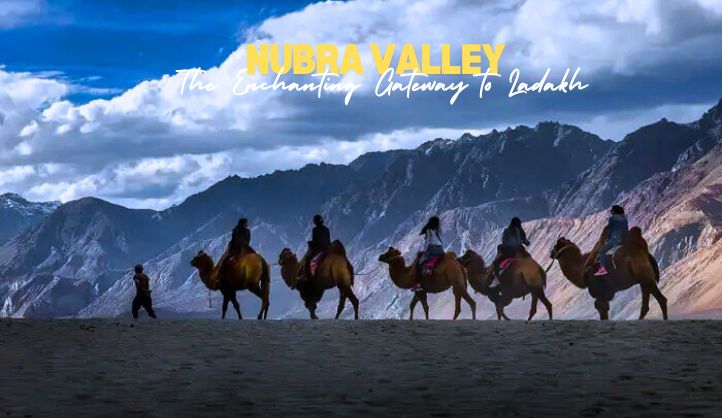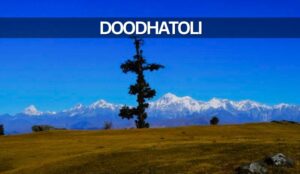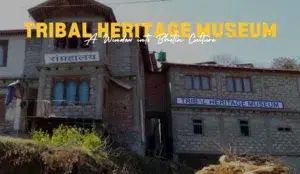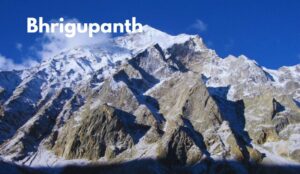In the northernmost part of India, Nubra Valley is a mesmerizing high-altitude desert in the union territory of Ladakh. Known for its dramatic landscapes, picturesque monasteries, ancient trade routes, and unique cultural heritage, the valley is often described as a hidden gem in the Himalayas. Located approximately 150 kilometers from Leh, the valley is shaped by the confluence of the Shyok and Nubra (Siachen) Rivers. The region’s unique blend of barren mountains, lush green oases, and vast dunes makes it an unparalleled destination for travelers and adventurers alike.
Geography and Climate
Location and Topography
Nubra Valley lies at an average altitude of about 10,000 feet above sea level, surrounded by the towering Karakoram and Ladakh ranges. The valley spans along the ancient Silk Route, which once connected Central Asia with the Indian subcontinent. Today, remnants of this rich trading history remain in the form of caravanserais and ancient pathways.
The region is characterized by a mix of terrains—arid mountains, sprawling dunes, glacial streams, and lush meadows. Two key rivers, Shyok and Nubra, flow through the valley, nourishing its oases and supporting agriculture in an otherwise stark desert environment.
Climate
Nubra Valley experiences an extreme climate due to its high-altitude location. Summers (June to September) are relatively mild, with daytime temperatures ranging between 15°C and 30°C, making it the ideal season to visit. Winters (October to May), however, are `harsh, with temperatures often plummeting below -20°C. The valley remains largely inaccessible during winter due to heavy snowfall that blocks mountain passes, including the famous Khardung La.
How to Reach Nubra Valley
By Road
The most popular way to reach Nubra Valley is by road from Leh. The journey takes approximately 5-6 hours and crosses the iconic Khardung La Pass. Travelers can hire taxis and private vehicles or opt for motorcycle tours.
By Air
The nearest airport is Kushok Bakula Rimpochee Airport in Leh. From Leh, travelers must take a road journey to reach Nubra Valley.
Inner Line Permit
As Nubra Valley is close to the India-Pakistan border, an Inner Line Permit (ILP) is required for Indian and foreign tourists. These permits can be obtained online or in Leh.
Key Attractions
1. Diskit Monastery
Diskit Monastery, the oldest and largest monastery in Nubra Valley, is perched atop a hill overlooking the Shyok River. Established in the 14th century, this monastery belongs to the Gelugpa (Yellow Hat) sect of Tibetan Buddhism. The main attraction here is the 32-meter-tall Maitreya Buddha statue, which radiates peace and serenity as it gazes over the valley.
The monastery also houses ancient scriptures, murals, and a prayer hall. Visiting during the morning prayer session offers a spiritual experience as monks chant sacred hymns in a serene atmosphere.
2. Hunder Sand Dunes
Hunder, often referred to as the “Desert in the Sky,” is famous for its sweeping sand dunes surrounded by snow-capped mountains. This unique cold desert offers a stark contrast to the green patches seen elsewhere in the valley.
Visitors can enjoy camel safaris on the double-humped Bactrian camels, which are remnants of the Silk Road era. Riding through the dunes as the sun sets behind the Karakoram Range is an unforgettable experience.
3. Turtuk Village
Turtuk, located near the Line of Control with Pakistan, is one of the last villages on the Indian side of the border. Opened to tourists in 2010, Turtuk offers an insight into Balti culture. The village is renowned for its apricot orchards, traditional wooden houses, and a slower pace of life.
Walking through the narrow lanes of Turtuk and interacting with locals provides a glimpse into the unique blend of Ladakhi and Balti traditions.
4. Panamik Hot Springs
Panamik, the last accessible village for civilians on the way to Siachen Glacier, is known for its therapeutic hot springs. These sulfur-rich springs are believed to have healing properties and are surrounded by stunning views of the rugged landscape.
5. Yarab Tso Lake
Often referred to as the “Hidden Lake,” Yarab Tso is a sacred and pristine high-altitude lake near Sumur Village. A short trek leads visitors to this serene spot, where the still waters mirror the surrounding mountains. The tranquility of the lake makes it a perfect destination for meditation and introspection.
Culture and Traditions
The Nubra Valley is a cultural melting pot where Tibetan Buddhism and Balti traditions coexist harmoniously. The majority of the population follows Tibetan Buddhism, and monasteries are central to their way of life. Festivals such as Dosmoche and Losar are celebrated with great fervor, featuring colorful rituals, traditional music, and dance.
Balti culture, influenced by Tibetan, Central Asian, and Islamic traditions, is particularly prominent in Turtuk. The Balti people are known for their hospitality, and their cuisine, including dishes like thukpa, skyu, and apricot-based desserts, reflects their rich cultural heritage.
Adventure Activities
1. Trekking
Nubra Valley offers numerous trekking routes for adventure enthusiasts. Popular treks include the Nubra Valley Trek and the Yarma Gonbo Trek, which take trekkers through remote villages, monasteries, and breathtaking landscapes.
2. Biking
Crossing the Khardung La Pass, one of the highest motorable roads in the world, is a dream for bikers. The journey from Leh to Nubra Valley is an adrenaline-pumping experience, offering panoramic views of the rugged terrain.
3. Camel Safari
The double-humped Bactrian camel safari at Hunder Sand Dunes is a unique adventure. These camels, once used for transporting goods along the Silk Road, now provide an exciting way to explore the cold desert.
4. River Rafting
The Shyok River offers opportunities for river rafting, combining the thrill of navigating rapids with stunning views of the valley.
Best Time to Visit
The ideal time to visit Nubra Valley is during the summer months, from June to September. The pleasant weather allows for outdoor activities and sightseeing. During this period, the valley blooms with wildflowers, creating a stark contrast against its barren landscapes.
Tips for Travelers
- Acclimatization: As Nubra Valley is at a high altitude, proper acclimatization in Leh is crucial to avoid altitude sickness.
- Packing Essentials: Carry warm clothing, even during summer, as temperatures can drop significantly at night.
- Responsible Tourism: Respect the local culture, avoid littering, and support sustainable tourism practices.
Wildlife in Nubra Valley
Despite its harsh environment, Nubra Valley supports diverse wildlife. Its unique position between the Trans-Himalayan and Himalayan ecosystems provides a habitat for various species.
- Snow Leopard: Often referred to as the “ghost of the mountains,” this elusive predator inhabits the higher reaches of the valley.
- Himalayan Marmot: These playful creatures are commonly spotted near Khardung La and other high-altitude areas.
- Bactrian Camel: Found mainly in the Hunder region, these camels are iconic to the valley and a symbol of its Silk Road legacy.
- Birds: Nubra Valley is a haven for birdwatchers, with species like the black-necked crane, golden eagle, and various Himalayan finches often seen in the area.
Conclusion
Nubra Valley is a land of extraordinary contrasts—a place where stark deserts meet lush oases, where ancient traditions blend with natural beauty. Whether you’re seeking adventure, spirituality, or tranquility, this Himalayan wonder offers something for every traveler. Its breathtaking landscapes and rich cultural heritage leave an indelible mark on all who visit, making Nubra Valley a destination that must be experienced at least once in a lifetime.
FAQs About Nubra Valley
1. What is the best time to visit Nubra Valley?
The best time to visit Nubra Valley is between June and September when the weather is pleasant, the roads are accessible, and the valley is in full bloom. During this time, visitors can enjoy outdoor activities, scenic landscapes, and cultural festivals.
2. How do I reach Nubra Valley?
You can reach Nubra Valley by road from Leh, which is about 150 kilometers away. The journey involves crossing Khardung La Pass, one of the highest motorable roads in the world. The nearest airport is in Leh, and travelers must obtain an Inner Line Permit (ILP) to visit the valley.
3. What permits are required to visit Nubra Valley?
An Inner Line Permit (ILP) is required for Indian and foreign tourists to enter Nubra Valley, as it is close to the international border. Permits can be obtained online or from the DC office in Leh. Ensure to carry photocopies of your ID for checkpoints.
4. What are the must-visit attractions in Nubra Valley?
Key attractions in Nubra Valley include:
- Diskit Monastery: Famous for its giant Maitreya Buddha statue.
- Hunder Sand Dunes: Known for camel safaris on double-humped Bactrian camels.
- Turtuk Village: A charming Balti village with apricot orchards.
- Panamik Hot Springs: Known for their therapeutic properties.
- Yarab Tso Lake: A serene high-altitude lake.
5. Is Nubra Valley suitable for adventure activities?
Yes, Nubra Valley offers a range of adventure activities:
- Trekking: Explore remote trails and stunning landscapes.
- Camel Safari: Ride Bactrian camels at Hunder Sand Dunes.
- Biking: Ride through Khardung La Pass, a thrilling experience for bikers.
- River Rafting: Enjoy rafting in the Shyok River.
6. What kind of accommodations are available in Nubra Valley?
Nubra Valley offers various types of accommodations, including:
- Guesthouses: Budget-friendly stays with basic amenities.
- Luxury Camps: Tents with modern facilities at Hunder and Diskit.
- Homestays: Stay with locals for an authentic experience.
It’s advisable to book in advance, especially during peak season.





